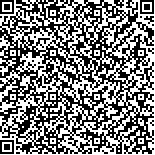吕晓,林阳阳,董军涛,录欣欣,燕铁斌.功能性电刺激对脑梗死大鼠梗死周边区谷氨酸受体表达的影响[J].中华物理医学与康复杂志,2015,37(11):801-805
扫码阅读全文

|
| 功能性电刺激对脑梗死大鼠梗死周边区谷氨酸受体表达的影响 |
|
| |
| DOI: |
| 中文关键词: 功能性电刺激 脑梗死 运动功能 感觉功能 |
| 英文关键词: Functional electrical stimulation Cerebral infarction Motor function Sensory function |
| 基金项目:国家自然科学基金资助项目(81182311) |
|
| 摘要点击次数: 2142 |
| 全文下载次数: 2940 |
| 中文摘要: |
| 目的探讨功能性电刺激(FES)是否是通过增加局灶性脑缺血大鼠梗死周边区突触谷氨酸通路相关蛋白的表达,增加突触可塑性,促进运动功能和感觉功能改善。 方法选择雄性Wistar大鼠81只,采用随机数字表法分为假手术组、安慰刺激组及FES组,每组27只。安慰刺激组和FES组采用光化学诱导法制作Wistar大鼠右侧脑局灶缺血模型,假手术组予以冷光源照射但不注射玫瑰红。造模成功3d后,FES组给予功能性电刺激,每日1次,每次刺激10min,间歇10min后再刺激10min;安慰刺激组连接电刺激器,但不打开电源;假手术组常规饲养,不予任何处理。3组大鼠均于干预3、7、14d后测定其运动和感觉功能,于测定结束后处死对应时间点大鼠,取梗死周边区皮质行Western blot检测,测定NMDAR1,pGluR1和GluR1的含量,并采用单因素方差分析比较3组大鼠不同时间点的感觉、运动功能和蛋白定量。 结果干预7、14d后,FES组大鼠的运动功能评分分别为(0.30±0.08)分和(0.20±0.07)分,与安慰刺激组同时间点比较,差异均有统计学意义(P<0.05);干预7、14d后,FES组大鼠的贴纸去除时间分别为(15.1±7.2)s和(10.3±4.7)s,与安慰刺激组同时间点比较,差异均有统计学意义(P<0.05)。干预7d后,FES组大鼠的NMDAR1含量与安慰刺激组同时间点比较,差异有统计学意义(P<0.05);干预14d后,FES组大鼠的GluR和pGluR1含量与安慰刺激组同时间点比较,差异均有统计学意义 (P<0.05)。 结论功能性电刺激可促进脑缺血大鼠运动和感觉功能的恢复,其可能机制可能与功能性电刺激可促进梗死周边区NMDAR1,pGluR1和GluR1通路中相关蛋白的表达以及沉默突触的去沉默化有关。 |
| 英文摘要: |
| Objective To investigate whether functional electrical stimulation (FES) can improve the expression of proteins in the NMDAR1-pGLuR1 pathway so as to promote the recovery of motor function and sensation after stroke. MethodsEighty-one Wistar rats were used to make a photochemical brain model of local ischemia. Rats were randomly assigned into a sham, placebo stimulation or FES group. Rats in the placebo and FES groups had local ischemia induced in the M1 zone of the brain using the photosensitive dye Bengal rose. It was administered intravenously and a laser beam was then stereotactically positioned on the skull. The rats in the FES groups were stimulated for 30 minutes (10 minutes on, 10 minutes off, then 10 minutes on). The placebo group′s treatment was similar, but without the electric current. The rats in the sham group received no intervention. The cylinder test and the adhesive-removal test were used to test the rats′ motor function and sensation before the operation and before they were sacrificed. Cohorts were sacrificed after 3, 7 and 14 days of intervention. NMDA receptor and AMPA receptor were detected in the peri-ischemic cortex using western blotting. ResultsAfter 7 and 14 days the index of forelimb motor function in the cylinder test of the FES group was significantly better than that of the placebo group. The average adhesive-removal time of the FES group was also significantly faster compared with the placebo group. After 7 days the average expression of NMDAR1 in the FES group was significantly higher than in the placebo group. The average expression of GluR1 and pGluR1 in the FES group was significantly higher than in the placebo group after 14 days. ConclusionFunctional electrical stimulation can improve motor function after ischemia through the NMDAR-AMPAR signal pathway, at least in rats. |
|
查看全文
查看/发表评论 下载PDF阅读器 |
| 关闭 |